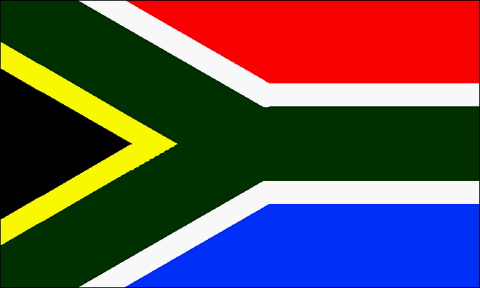





In October 1989, NBC News reported that a missile produced by ARMSCOR (Armaments Corporation of South Africa) was launched on July 5, 1989, and flew 900 miles southeast over the Indian Ocean. (1) It was subsequently reported that "knowledgeable U.S. officials" confirmed the NBC report that an intermediate-range missile "was constructed and flown by South Africa July 5 using technology acquired from Israel." (2) The "apparently successful test is regarded by U.S. experts as the first of several needed for the white-minority government of South Africa to have a reliable missile force." (3) The missile was launched from a facility named Arniston by the Central Intelligence Agency (CIA), but locally known as the "RSA" from its Overberg test site at the southern tip of Africa.
Reportedly this first test was followed by a second on November, 19 1990. A third test-firing of South Africa's intermediate-range missile was expected in the spring of 1991 but was never reported to have occurred. The South African government's official statement was that the missiles were booster rockets for a peaceful space program.
South Africa's large industrial and scientific base indicates that indigenous production of ballistic missiles would not be difficult to achieve. The possible mission of such a weapon, however, was somewhat of a mystery, as South Africa enjoyed a vast military superiority over its neighbors. The ascribed 1,450 km/1,000 kg capability of the Aniston would enable the South African armed forces to hit targets in all the "front-line states": Angola, Mozambique and Namibia. There was little doubt that South Africa had the technical capability and experience to produce nuclear warheads as well: On March 25, 1993, Prime Minister P.W. DeKlerk announced that six of a planned seven atomic bombs had been built, but then dismantled in 1990. (4) This is the first case of a country voluntarily scrapping its nuclear weapons. (Later examples are Belarus, Kazakhstan, and Ukraine.) South Africa signed the Nuclear Non-Proliferation Treaty (NPT) in 1991 as a non-nuclear weapon state. However, in September 1991, the United States issued sanctions against South Africa for importing Israeli ballistic missile technologies in violation of the Missile Technology Control Regime (MTCR). Ultimately, South Africa ended its missile collaboration with Israel in 1992 and agreed to halt its development of long-range missiles and space rockets in 1993.
With the advent of the Mandela government, the Arniston has been cancelled, nuclear weapons development has been repudiated, and South Africa has joined the MTCR in October 1995. In February 1999, South Africa's first satellite, Sunsat was launched into space on board a US Air Force Boeing Delta II rocket. In November 2002, South Africa joined the Hague Code of Conduct Against Ballistic Missile Proliferation (HCOC). While the South African defense industry has the technological and manpower capabilities to construct medium to long-range ballistic missiles, doing so would go against South Africa’s commitment to non-proliferation and export control.
1. NBC Nightly News, 25 Oct 89.
2. R. Jeffrey Smith, "Israel Said to Help S. Africa on Missile," The Washington Post, 26 Oct 89, p. A36.
3. David B. Ottaway, "U.S. Knew of Israel-S. Africa Deal," The Washington Post, 27 Oct 89, pp. A1, 27.
4. Norman Friedman, Proceedings of the Naval Institute, May 93, p. 166.
Ending South Africa's Rocket Program: A Nonproliferation Success, Henry Sokolski, September 1, 1993, last accessed May 30, 2012
South Africa's Missile Program
Hague Code of Conduct Against Ballistic Missile Proliferation (HCOC)
